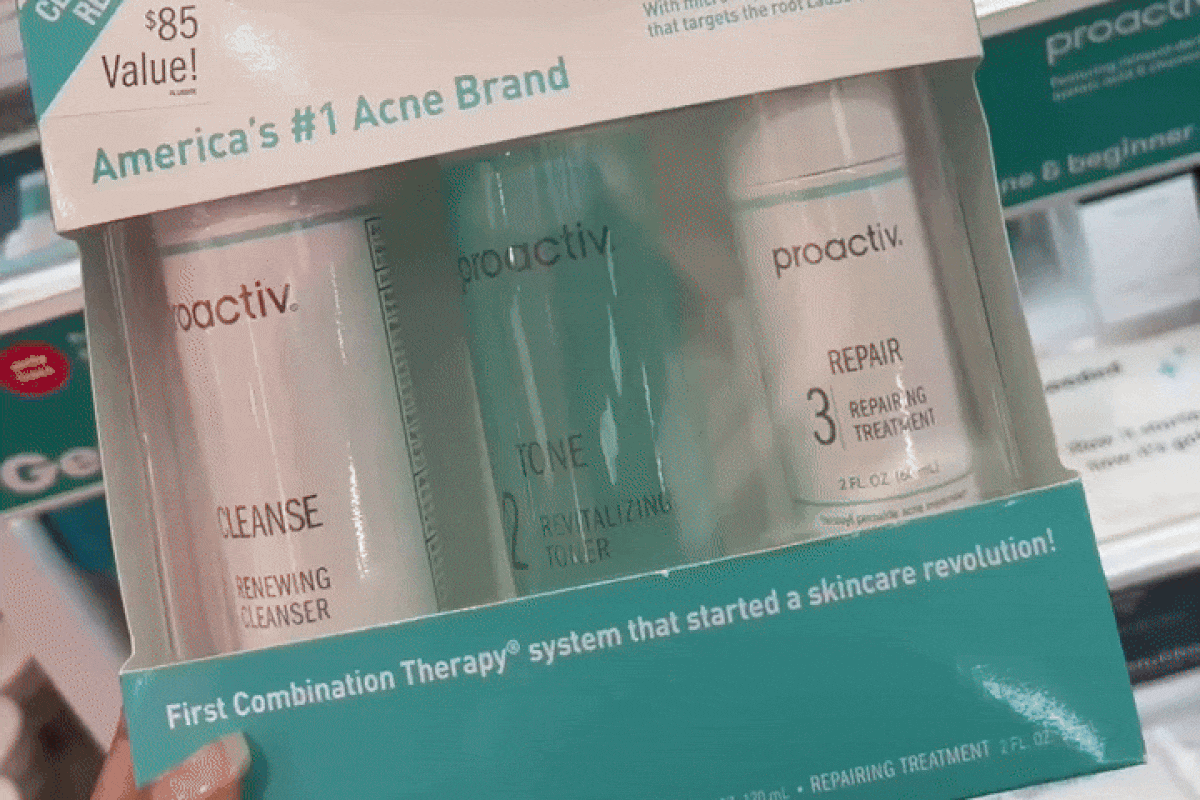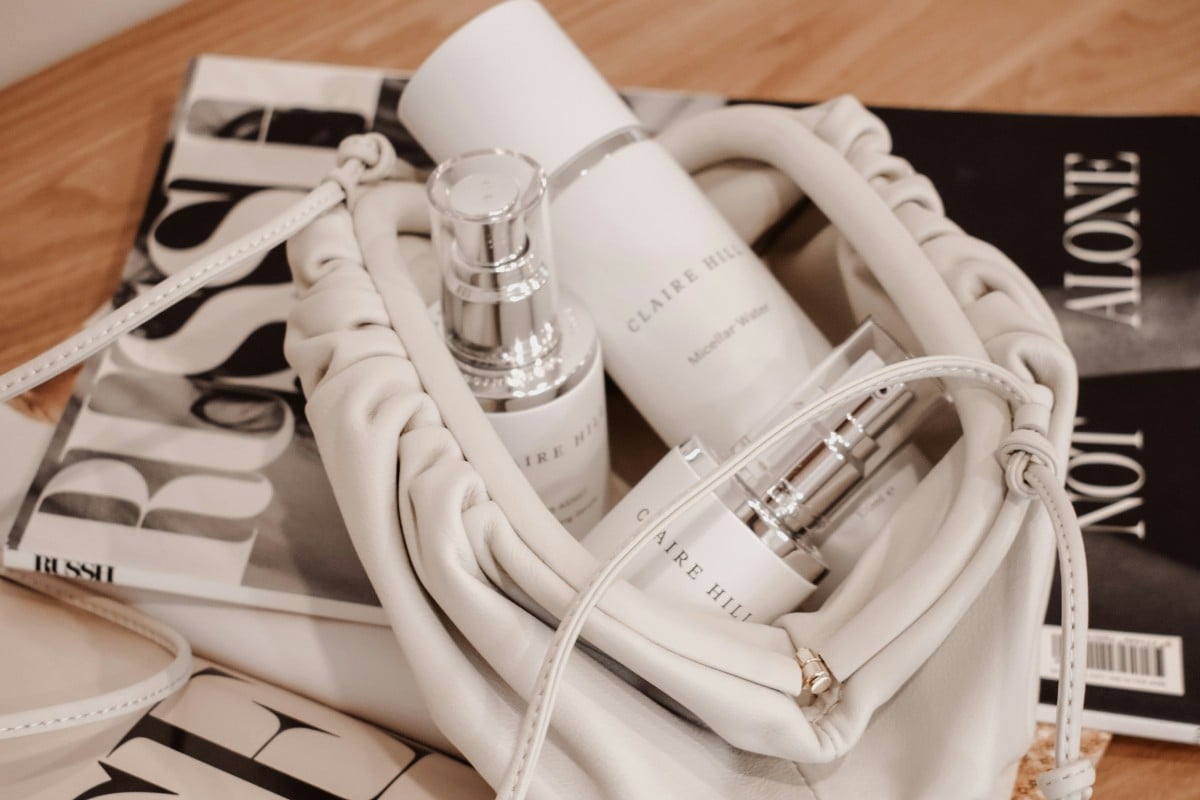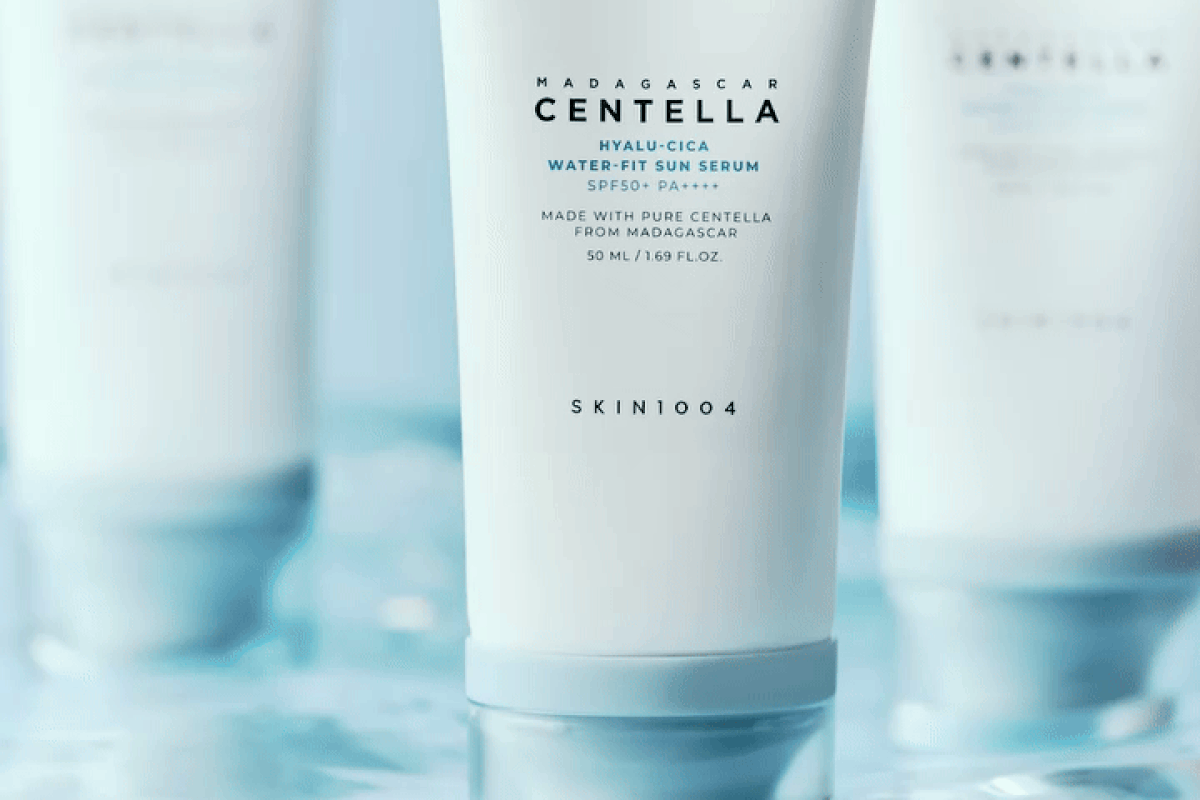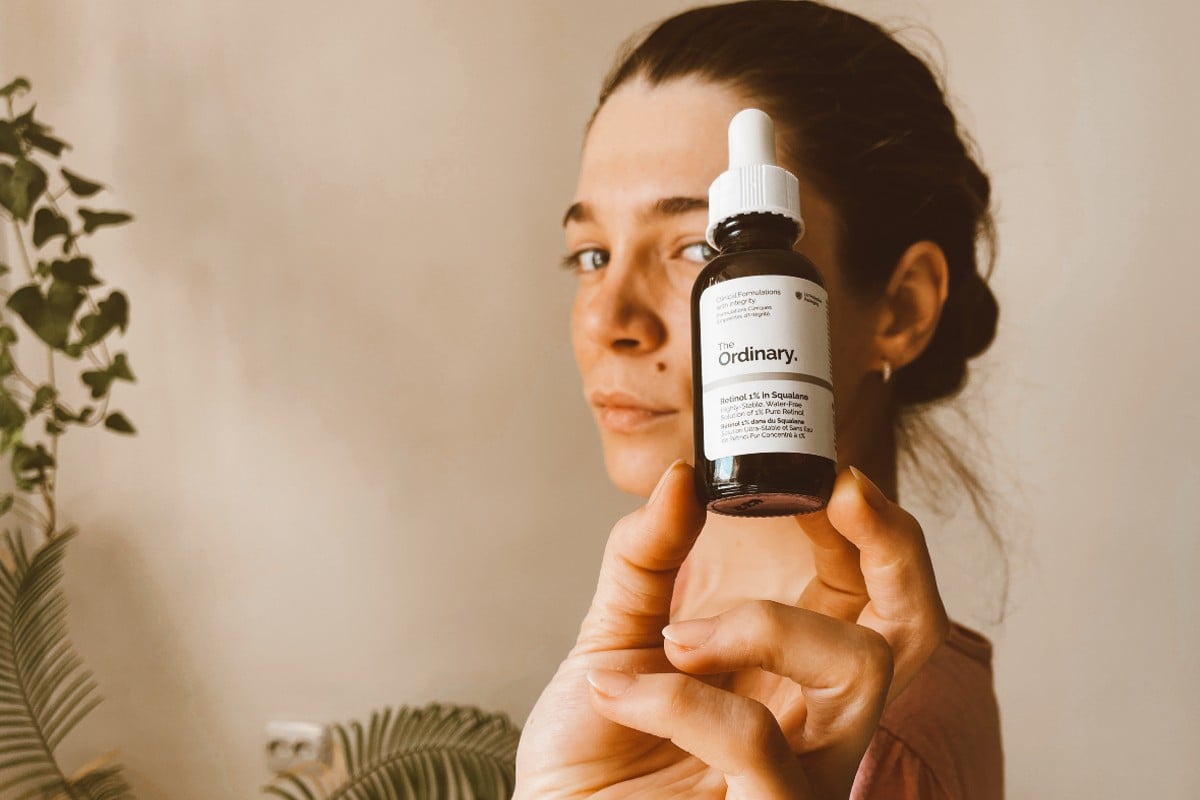Don’t worry; cholesterol-filled skincare isn’t going to get you in trouble with the doctor, just the opposite, in fact. Despite fats being vilified by much of the food industry, cholesterol is a vital component of what makes skin bouncy and plump. Something of an unknown hero for those suffering from impaired moisture barriers and sensitivities, this silky emollient has already made a place for itself in many of your favorite cream products.
You may know her hotter sisters — fatty acids and ceramides — which are often more lauded in the cosmetic world. But make no mistake, cholesterol in skincare is even more beneficial for inflammatory conditions and dryness.[1] So how does it work, and how to use it for maximum results? If you’ve been pondering these questions, this article is for you. Keep reading to learn everything about cholesterol in skincare.
What is cholesterol in skincare?
Our skin is chocked full of helpful barrier protectors, including cholesterol, which are lipids that serve to shield and hydrate. They’re principally made up of natural moisturizing factors like amino acids and humectants, playing a critical role in keeping skin smooth, protected, and soft.[2] Besides, cholesterol in skincare is a natural emollient, a kind of skin conditioner. It nourishes like no other, giving some of your favorite moisturizers a recognizable silky satin finish.
As a fundamental component of the outer skin, cholesterol has found a place in skincare, combating deficiencies known to cause dryness.[3] It can come from several sources, including squalane, lanolin, and even wool extract.[4] Very multifunctional, cholesterol in skincare formulas is used as a stabilizer, surfactant, and water-binding agent.
How does it benefit the skin?
We’ve all been guilty of over stripping our faces; whether you’ve used too harsh a cleanser or the dreaded St.Ives scrub, it’s easy to compromise your skin’s defenses. If you haven’t heard of a broken barrier, it’s the result of these external stressors taking away protective shields like natural oils and waxes that make up the outer layers of the skin.
Cholesterol for skin is like mortar for bricks. It holds everything together and keeps skin balanced. Dehydrated skin often comes about when these critical fats are no longer holding in water, which can quickly evaporate away. Applying cholesterol topically replenishes these fatty stores and boosts other barrier-forming factors for healthier-feeling, more happy, plump skin. Not only does it directly promote key barrier proteins like filaggrin, comprising over 25% of normal lipids, but it’s also been shown to benefit mature skin more than ceramides or fatty acids.[2][5][6]
It also reinforces the skin’s outermost layers protecting against environmental stressors. In one study conducted in Korea, it was the strongest anti-inflammatory out of three different lipids, better protecting damaged skin and strengthening the barrier against UV damage.[7]
Inflammed skin can be a vicious cycle, you can try to calm the redness, but until you heal the damage, it will stay angry and irritated. Cholesterol can help rebuild the structure to protect against environmental stressors and unhealthy bacteria for those with chronic inflammation. Additionally, more mature skin types will benefit from better retaining hydration as deficiencies in cholesterol are a major contributor to the appearance of skin aging.[8] Cholesterol is also a good moisturizer because it maintains moisture levels, acting as a very effective, non-greasy emollient. It’s a favored ingredient in skincare products as it disperses skincare actives in an emulsion, keeping oil- or water-based components evenly mixed.[9]
Is it safe?
Cholesterol is an essential and natural component of the skin, so it’s totally safe when used topically. Applying it topically won’t impact blood cholesterol either.[10]
Cholesterol in skincare comes from several safe sources; there are both vegan/ synthetic versions and animal-derived versions. All are carefully regulated under several cosmetic boards in the EU and FDA-approved. It can be labeled under a few different names, but you’ll commonly see it also listed as lanolin or wool extract. On average most products use a concentration of 1.4% cholesterol, though some formulations can go as high as 5%.[11] You can get irritation from high amounts of cholesterol, but even then, it doesn’t increase skin sensitivities or risk photodamage.
Who should use cholesterol
Cholesterol is something everyone’s skin needs to function, making it a common ingredient in many cream or moisturizing products. Anyone looking for relief of redness, irritation, and dryness can benefit. Because it’s such a great anti-inflammatory and directly stimulates the healing of the skin’s barrier, cholesterol products are especially best for those with vulnerable skin post-treatment or sufferers of inflammatory conditions. Cholesterol is one of the skin’s fundamental components that decreases with age; for more mature skin types struggling with dryness replenishing cholesterol can help repair your skin structurally.[9]
Final words
In life, it seems fat wants to go to all the wrong places; the word cholesterol alone might have you running away. But for the sake of your skin and a more ageless complexion, it might be time to embrace cholesterol’s role in skincare. Cholesterol promotes some of your skin’s best natural defenders against dehydration, UV damage, and inflammation — all in one non-irritating package. So keep an eye out the next time you buy a favorite cream; cholesterol might be just the thing your skin is craving.
- Feingold KR. The outer frontier: the importance of lipid metabolism in the skin. J Lipid Res. 2009;50 Suppl(Suppl): S417-S422. doi:10.1194/jlr.R800039-JLR200
- Feingold KR. Thematic review series: skin lipids. The role of epidermal lipids in cutaneous permeability barrier homeostasis. J Lipid Res. 2007 Dec;48(12):2531-46. doi: 10.1194/jlr.R700013-JLR200. Epub 2007 Sep 13. PMID: 17872588.
- Elias PM, Williams ML, Holleran WM, Jiang YJ, Schmuth M. Pathogenesis of permeability barrier abnormalities in the ichthyoses: inherited disorders of lipid metabolism. J Lipid Res. 2008 Apr;49(4):697-714. doi: 10.1194/jlr.R800002-JLR200. Epub 2008 Feb 2. PMID: 18245815; PMCID: PMC2844331.
- Feingold KR. The outer frontier: the importance of lipid metabolism in the skin. J Lipid Res. 2009;50 Suppl(Suppl): S417-S422. doi:10.1194/jlr.R800039-JLR200
- Osamu Hanyu, Hanako Nakae, Takashi Miida, Yuko Higashi, Hirotoshi Fuda, Motohiro Endo, Atsushi Kohjitani, Hirohito Sone, Charles A. Strott, Cholesterol sulfate induces expression of the skin barrier protein filaggrin in normal human epidermal keratinocytes, Biochemical and Biophysical Research Communications, Volume 428, Issue 1, 2012, Pages 99-104, ISSN 0006-291X.
- Zettersten EM, Ghadially R, Feingold KR, Crumrine D, Elias PM. Optimal ratios of topical stratum corneum lipids improve barrier recovery in chronologically aged skin. J Am Acad Dermatol. 1997 Sep;37(3 Pt 1):403-8. doi: 10.1016/s0190-9622(97)70140-3.
- Byun HJ, Cho KH, Eun HC, Lee MJ, Lee Y, Lee S, Chung JH. Lipid ingredients in moisturizers can modulate skin responses to UV in barrier-disrupted human skin in vivo. J Dermatol Sci. 2012 Feb;65(2):110-7. doi: 10.1016/j.jdermsci.2011.12.005. Epub 2011 Dec 13. PMID: 22209282.
- Anti-aging Cosmetics and Skin Barrier, by Korean Skin Barrier Society, 2018.
- Sahar Salehi, Mohammad Sadegh Nourbakhsh, Mardali Yousefpour, Ghadir Rajabzadeh, Sajad Sahab-Negah. (2021) Chitosan-coated niosome as an efficient curcumin carrier to cross the blood–brain barrier: an animal study. Journal of Liposome Research.
- The Relationship Between Skin Cholesterol Testing and Parameters of Cardiovascular Risk: A Systematic Review, Department of Medicine (Division of Cardiology), University of British Columbia, Vancouver, British Columbia, Canada.
- Final Report On The Safety Assessment Of Cholesterol, Journal Of The American College Of Toxicology




![Does resveratrol in red wine benefit your skin? While sipping on a glass of red wine can be a delightful experience, relying on it for skincare benefits is not the best idea. Sure, red wine contains a smidge of resveratrol, but let's put things into perspective. The concentration of resveratrol in red wine is relatively low. Red wines, specifically Pinot noir from France, typically contain 0.361-1.972 mg of resveratrol per liter.[8] To hit that reference dose of 500mg of resveratrol, you'd need to drink a lot of wine. We're talking about downing anywhere from 100 to 1000 glasses per day. It's a scene straight out of a wine lover's wildest dreams, but definitely not the healthiest approach. Resveratrol Benefits for Skin](https://womensconcepts.com/wp-content/uploads/2022/03/Resveratrol-Benefits-for-Skin.jpg)




